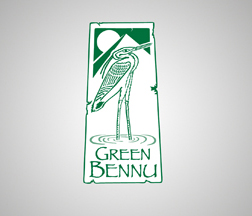From China Green Bennu offers a wide selection of leather and can match your leather needs in China.
Our products include: Top Grain, Split, By Cast, Bonded Leather, Vinyl, and PVC
Images of Leather and Leather Like materials from Green Bennu: Page 1 - Page 2 - Page 3 - Page 4 - Page 5
Some Leather Definitions:
RAWHIDE: Leather that has not been treated or tanned. Often used for binding rattan
FULL GRAIN LEATHER: Full grain leather is formed by removing the hair on the epidermis. There is no polishing or finishing done to the leather to achieve the graining in the leather.
TOP GRAIN LEATHER: Top Grain leather comes from Full-Grain leather where the “SPLIT” Layer has been removed. Because the Split layer has been removed, top-grain leather is thinner and more pliable than Full-Grain leather. Top-grain leather can have its surface sanded and finished which makes the surface feel more cold/or plastic like; finishing also increases the resistance to stain but also decreases breathability of the leather.
SPLIT LEATHER: When a hide or Full-Grain leather is divided, the surface becomes top-grain leather and the remainder fibrous parts become “Split”. During the splitting operation, the “Top-Grain” and Drop split are separated. The Drop split can be further split (Depending on thickness ) into a middle split and flesh split. Split leather has an Artificial layer applied to the surface of the split and is embossed with a leather grain. Splits can also be used to make Suede, where the both sides of the leather have been made “Fuzzy” on both sides.
Buck Skin: Leather made by using brains or fatty material to create a supple leather
Patent Leather: Leather with a High Gloss finish, typically this type of leather has a plastic layer.
Shagreen: Skin/leather from Stingrays
Slink: Extremely soft leather made from the skin of un-born calves.
Deerskin: Very tough leather made from deer.
Nubuck: Top-grain cattle hide leather that has been sanded and/or buffed on the grain side to give a nap of fibers- or velvet like surface
BONDED LEATHER (Reconstituted Leather): is made of 90 to 100% leather fibers bonded together to create a look and feel of leather. This is not as durable as other leathers and is designed for Occasionally used items. Bonded leather upholstery is vinyl upholstery that contains 17% leather fiber in its backing material. The vinyl is stamped to give a leather like texture. Bonded Leather Upholstery is durable and has a more environmentally friendly manufacturing process.
BYCAST LEATHER: is embossed polyurethane coating over split leather. This type of leather is very strong, durable, cheaper, and slightly stiffer than top grain leather , and is much more consistent and easier to clean/maintain.
CORDOVAN or SPANISH LEATHER: From Cordoba, describing a painted or gilded embossed leather manufactured into panels as an alternative wall covering to tapestry.
ANILINE LEATHER: Type of leather finishing where the hide has been treated with aniline as a dye. This creates a soft and supple leather. The color of Aniline Leather is often
TANNING PROCESSES:
VEGETABLE TANNED LEATHER: is tanned using tannin and other vegetable matter such as tree bark. This creates a supple and brown color where the shade depends on the colors of the leather and the chemicals used to dye. This type of leather is unstable in water and will discolor if soaked with water.
CHROME TANNED LEATHER: Using chromium sulfate and other Chromium Salts, leather is tanned creating a more supple and pliable than vegetable leather. This type of leather does not discolor or change shape in water or when soaked with water. There are more colors available with Chrome tanned leather than with vegetable leather. Note that Chrome is harmful to the environment.


